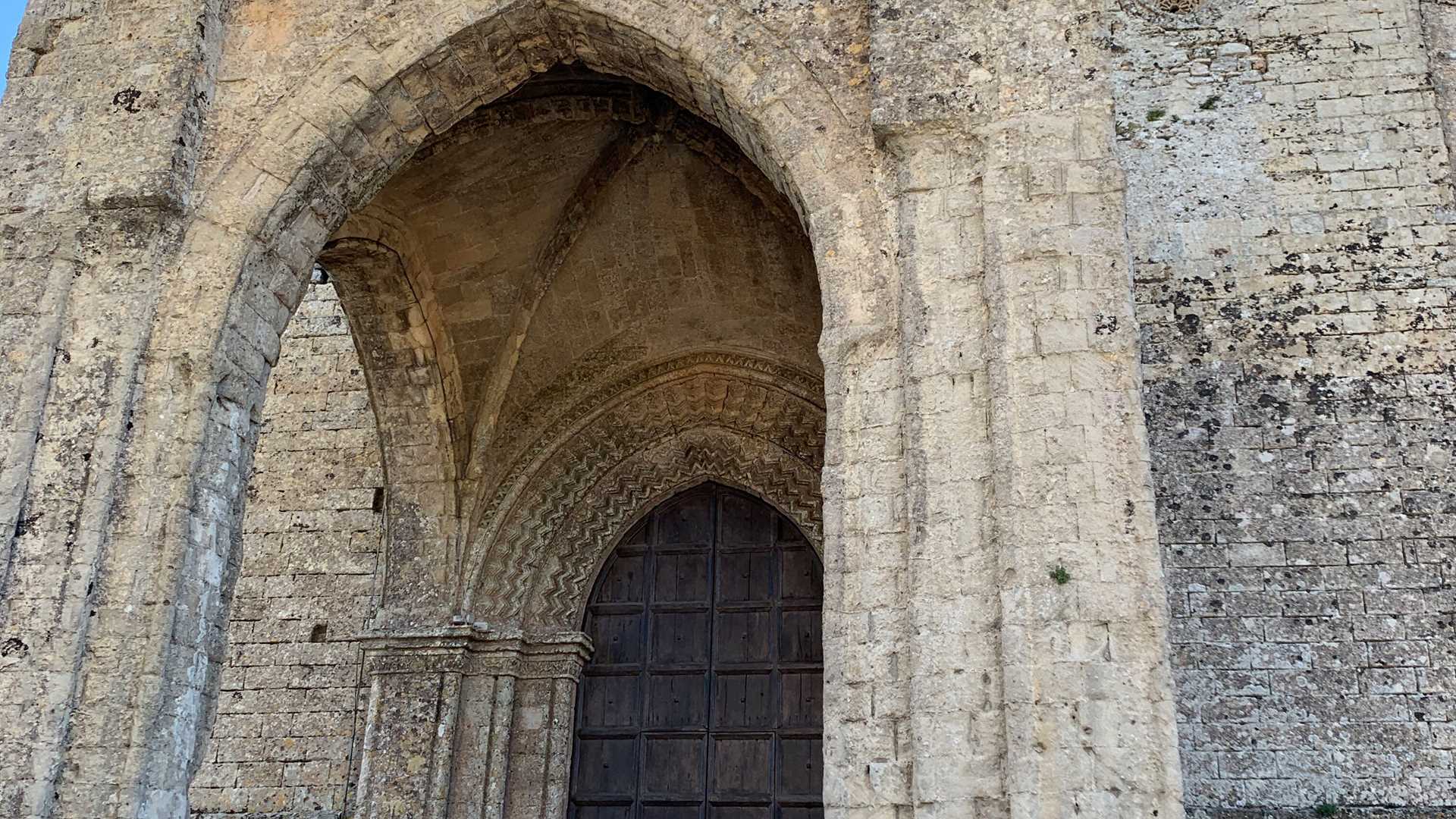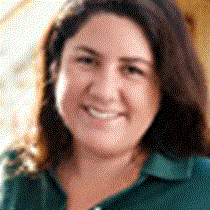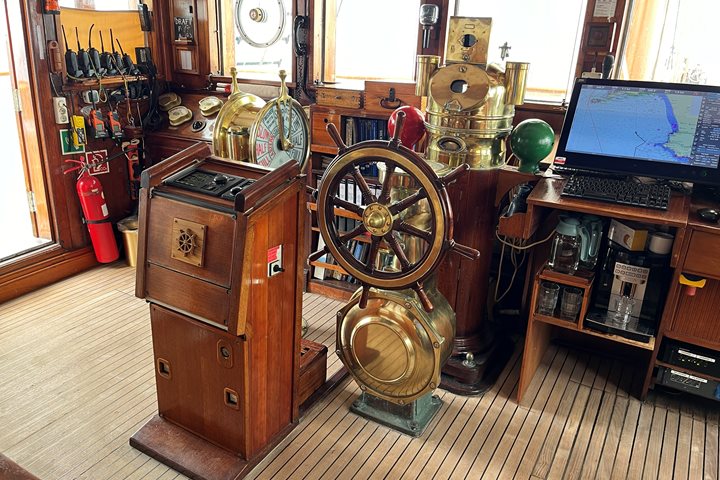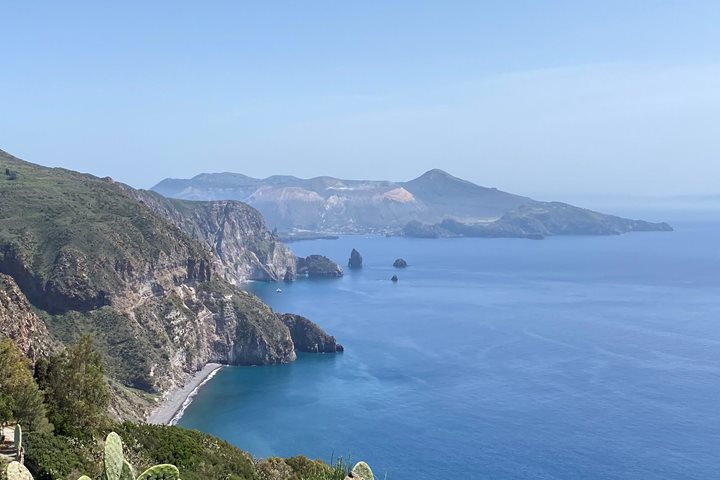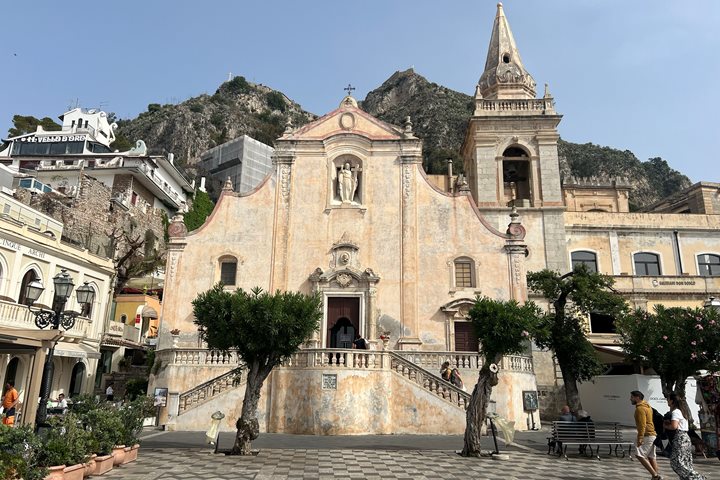I got so excited today for arriving to Sicily that I think I woke up every inhabitant of Trapani. I made a shipboard announcement with so much enthusiasm that the windows of the limestone buildings along the ocean side opened widely to my “Good morning”; it could have been my imagination, or it could have been that we were entering the harbor onboard one of the most beautiful ships ever built, the Sea Cloud.
We landed at the largest island in the Mediterranean Sea, Sicily. With its triangular shape, the island’s ancient Greek name was Trinacria (three cornered), which later derived to Sicania and finally Sicilia.
Sea Cloud docked at Trapani, a busy port on the northwestern corner of this triangle. We boarded our buses to be taken to the top of a 750-meter-high hill, a ceremonial place for some of the different cultures that have inhabited Sicily since 9000 BC.
It is known that the Phoenicians venerated Astarte at the top of this mountain. She was the goddess of love and fertility, and probably derived from an earlier Syrian deity. Astarte was in most of the figureheads of Phoenician ships sailing extensively along the Mediterranean. Astarte became Aphrodite for the Greek. That explains why this one goddess of Olympus was born in such a mysterious way, from a tear drop or from a drop of the Mediterranean Sea…in any case, a drop of saltwater.
When Sicily became the granary of the Romans, which lasted for 700 years, Aphrodite got a new name, Venus. Her temple remained at the top of Erice (or Eryx, the Greek name) until the Arabs conquered the area in 831. Then Eryx got its new name: the mountain of Hamid (Gebel Hamed). The Normans took over in 1167 and until 1934, the mount was known as Monte San Giuliano.
The goddess temple is long gone, but we were delighted by walking through the Medieval Erice, a labyrinth of winding lanes, inner courtyards, and cobbled streets. We tried several of the area’s sweets, like Cassata di Erice (a sort of sweet ricotta-stuffed sponge cake with pistachio icing) at “Maria Grammatico.” This famous pastry shop was opened by Maria, a woman who grew up in a cloistered orphanage (which we saw as well) that was run by Franciscan nuns. There, she learned to prepare the beautifully handcrafted pastries.
After Erice, we went to Marsala’s Museum to admire a Phoenician ship sunk during the First Punic War. The ship is a unique example of its kind.
We then walked through the city of Marsala, the landing site of Giuseppe Garibaldi when he began his famous quest for Italian Unification in 1860. The city is well known for producing the fortified Marsala wine that was especially desired by the British.
We had lunch at Cantine Florio, founded in 1833. We had a lovely tour of the production, and, of course, we tasted some of the Marsala fortified wines.
We came back onboard with our bottles of Sicilian wine to marinate with the feast of freshly caught tuna organized by hotel manager Simon and his amazing staff.
“We picked the cannoli,” and we are ready to continue with our exploration of Sicily!

